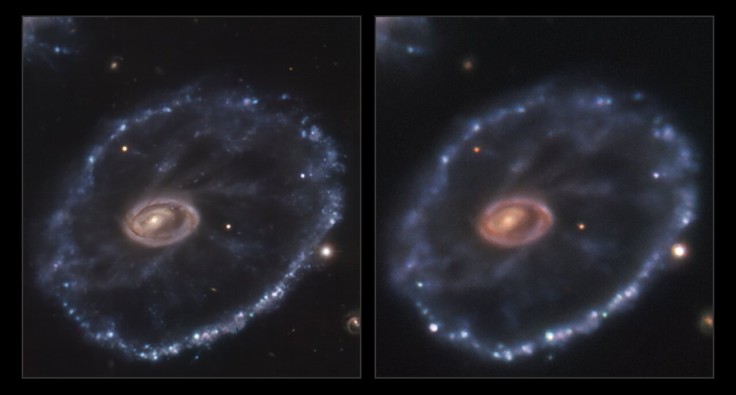A galactic explosion was recently observed by the European Southern Observatory (ESO).
According to a Space.com report, the ESO captured not only a "stunning view" of the Cartwheel galaxy but also a recent supernova explosion in the galaxy's lower left region.
Details on the Supernova

The supernova that was captured in the ESO's New Technology Telescope (NTT) occurred around 500 million light-years from Earth in the Sculptor constellation. The Cartwheel galaxy is part of the galaxies that make up the constellation.
The event, which was dubbed as SN2021afdx, seems to have happened fairly recently based on recent images and those taken by the Multi-Unit Spectroscopic Explorer in ESO's Very Large Telescope (VLT) from 2014. This conclusion was reached when ESO's VLT did not show any trace of a supernova, per the ESO.
According to a Sci-News report, the supernova was first detected in November 2021 by the Asteroid Terrestrial-Impact Last Alert System (ATLAS) survey. It is classified as a type 2 supernova, which occurs when a large star runs out of hydrogen to keep it from collapsing from its gravity.
The ESO's Advanced Public ESO Spectroscopic Survey was also used to measure the radiation from the galaxy to help identify the supernova as a type 2 supernova.
Details on the NTT
The NTT is a 3.58 meter (11.7 feet) optical and near-infrared telescope that comes equipped with the world's first computer-controlled main mirror, per the ESO. It is located at the La Silla Observatory in Chile's Atacama Desert.
The telescope's main mirror is equipped with active optics, a technology that the ESO developed to allow it to be flexible enough to be actively adjusted by actuators during observations. This technology enables the telescope to preserve an image's optimal quality.
It also has a secondary mirror position that can also be actively adjusted in three directions.
The NTT is the first telescope to have active optics, which is now added to all major modern telescopes like the Very Large Telescope at Chile's Cerro Paranal.
What is a Type 2 Supernova?
A type 2 supernova is considered as the "classic explosion" wherein a star several times more massive than our solar system's Sun has run out of hydrogen and helium at its core and is nearing the end of its life, per a separate Space.com article.
Once the star has exhausted its fuel, it will gradually build up heavier elements at its center and form onion-like layers of material, with lighter elements being pushed away from the star. This star core would then begin to implode after reaching a certain mass. A type 2 supernova is also known as a core-collapse supernova due to this implosion.
The star's implosion would then bounce back off the core and expel stellar material into space, forming the supernova we know. The explosion will leave an ultra-dense object called a neutron star - the compressed core of the former massive star, per Quanta Magazine.









